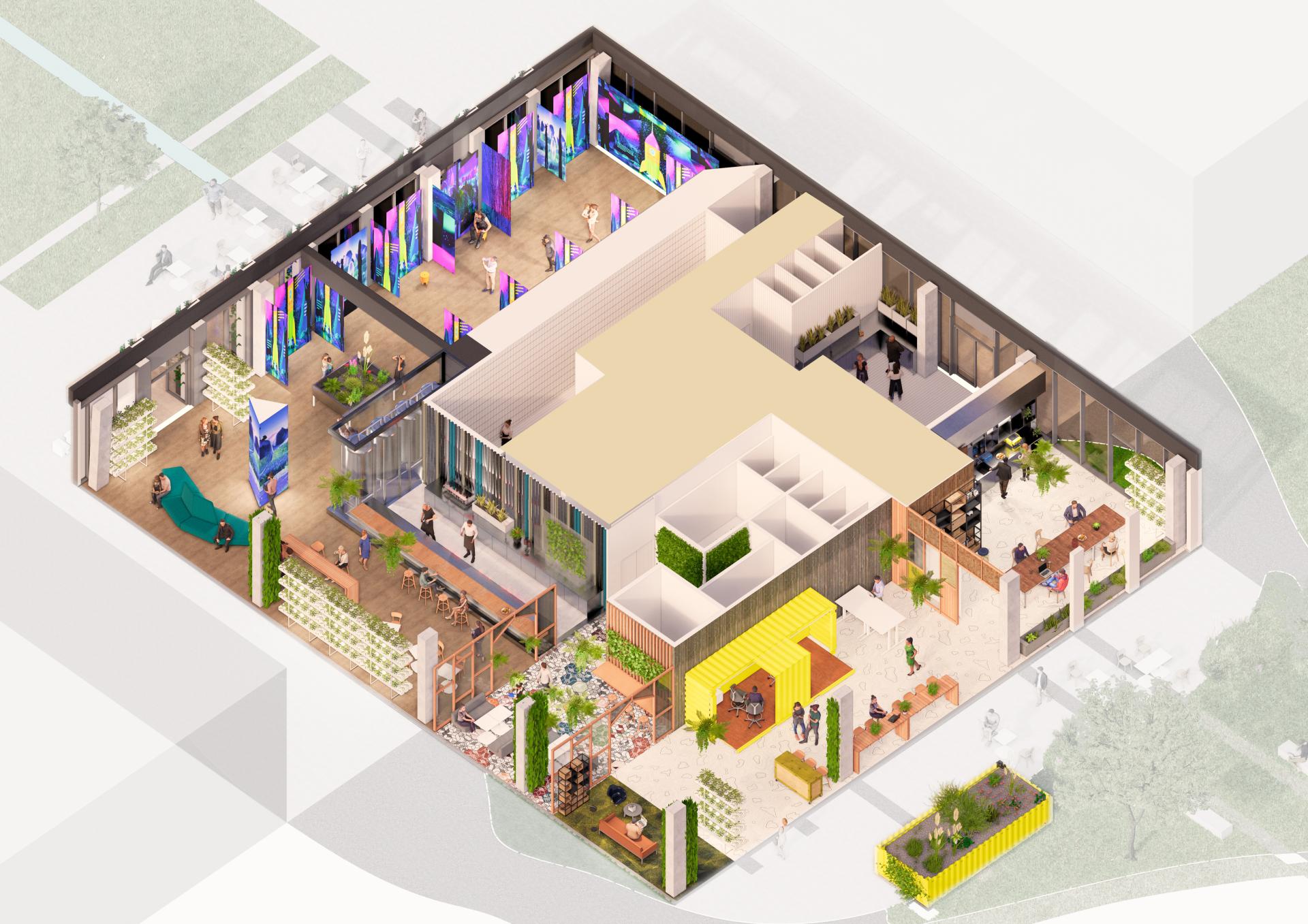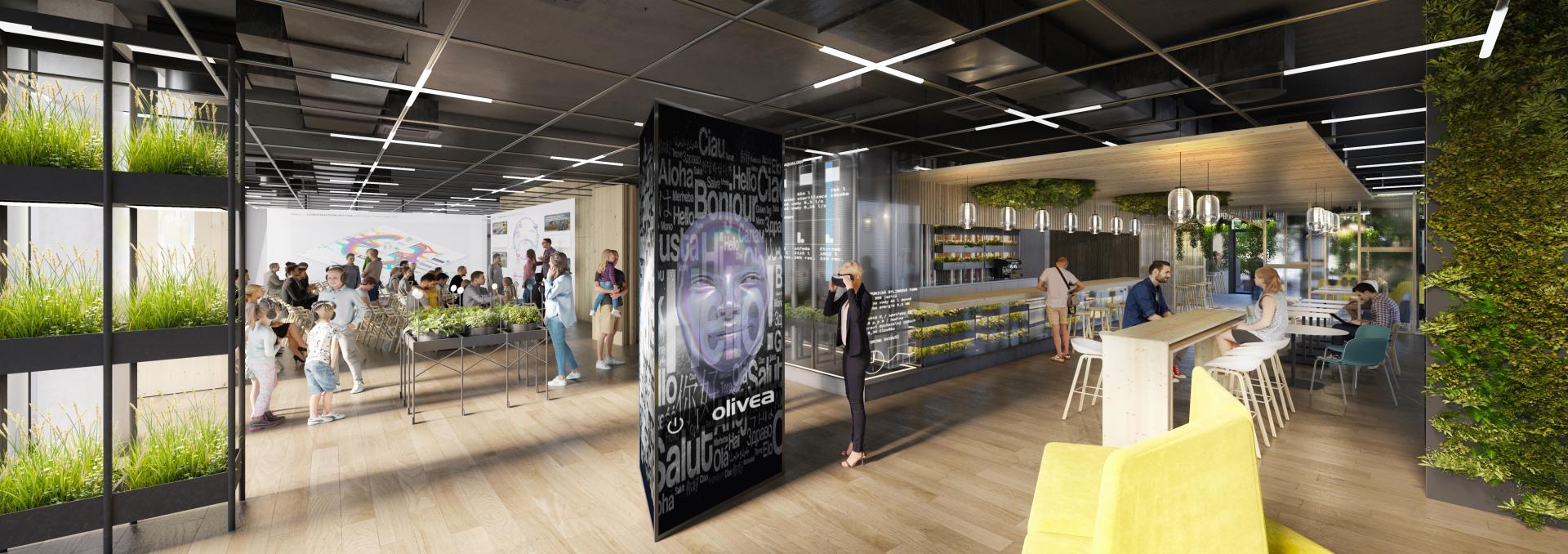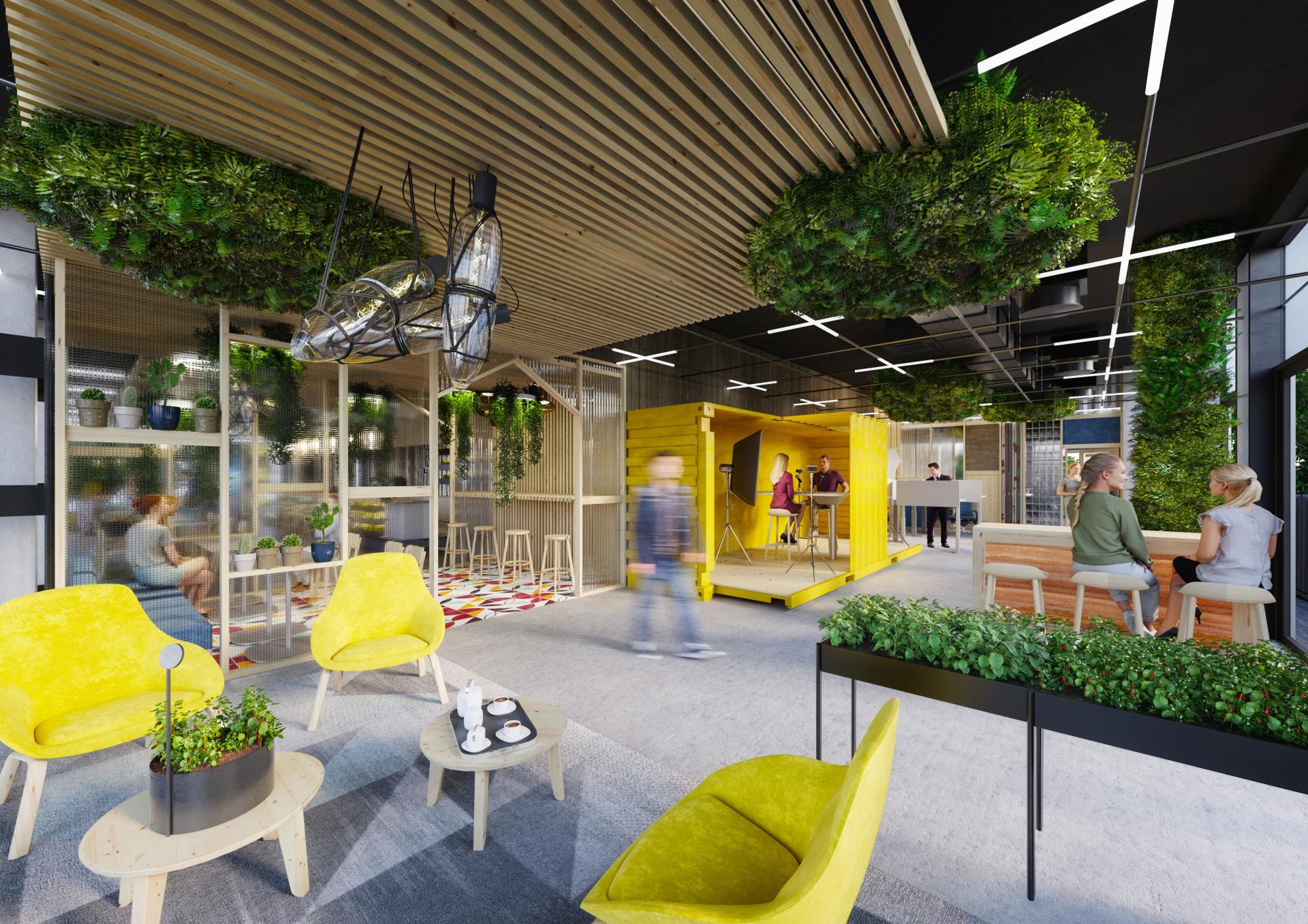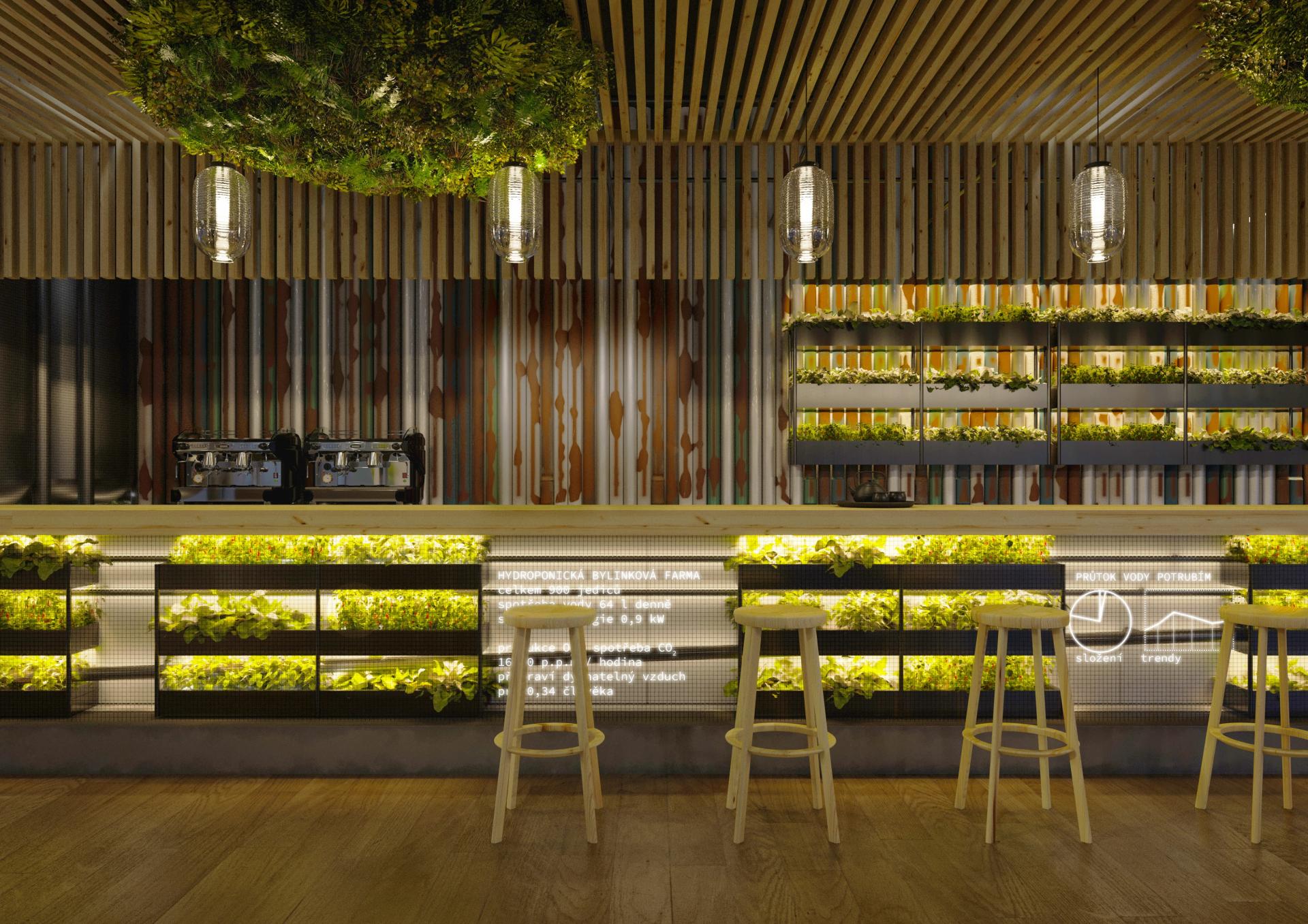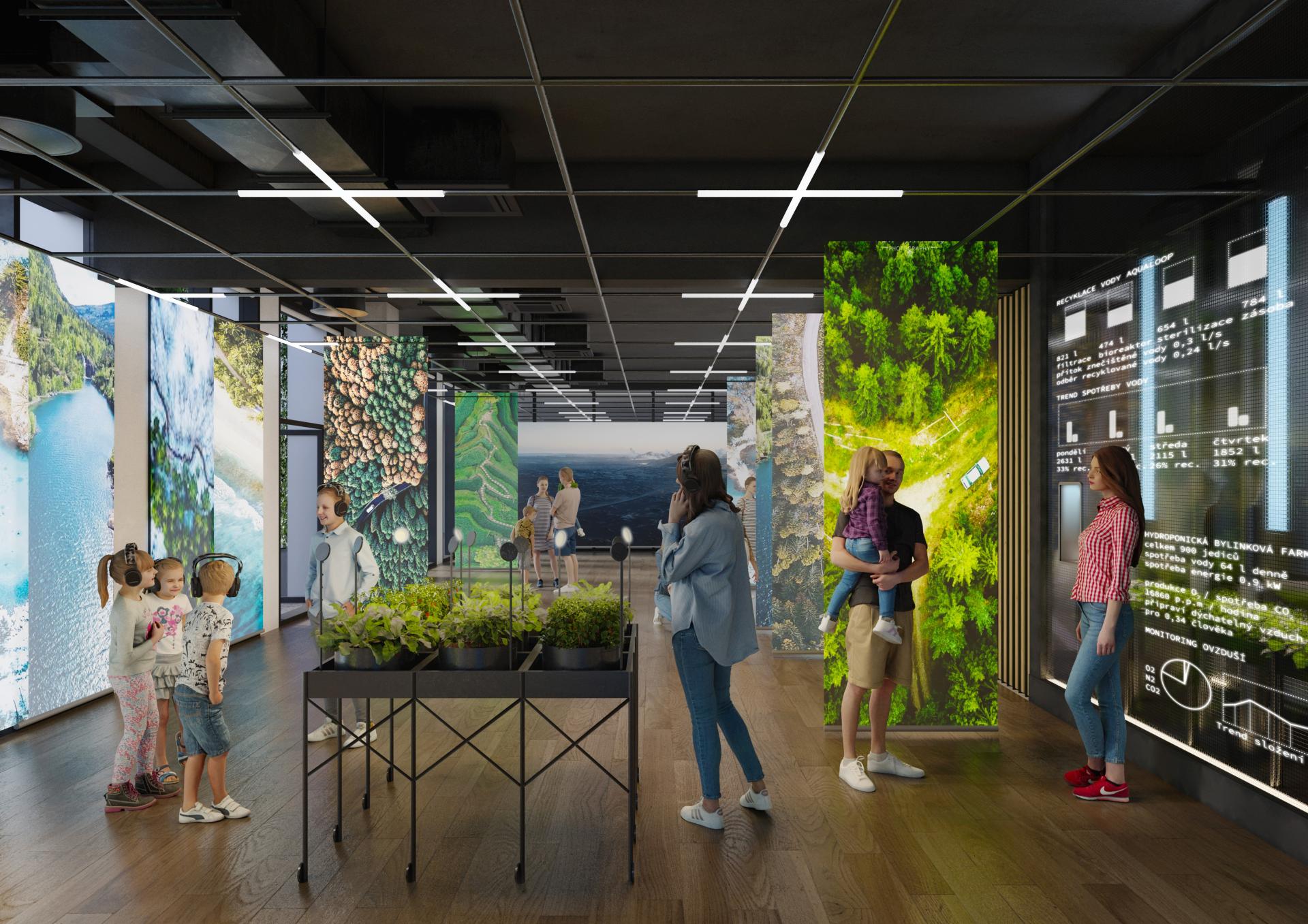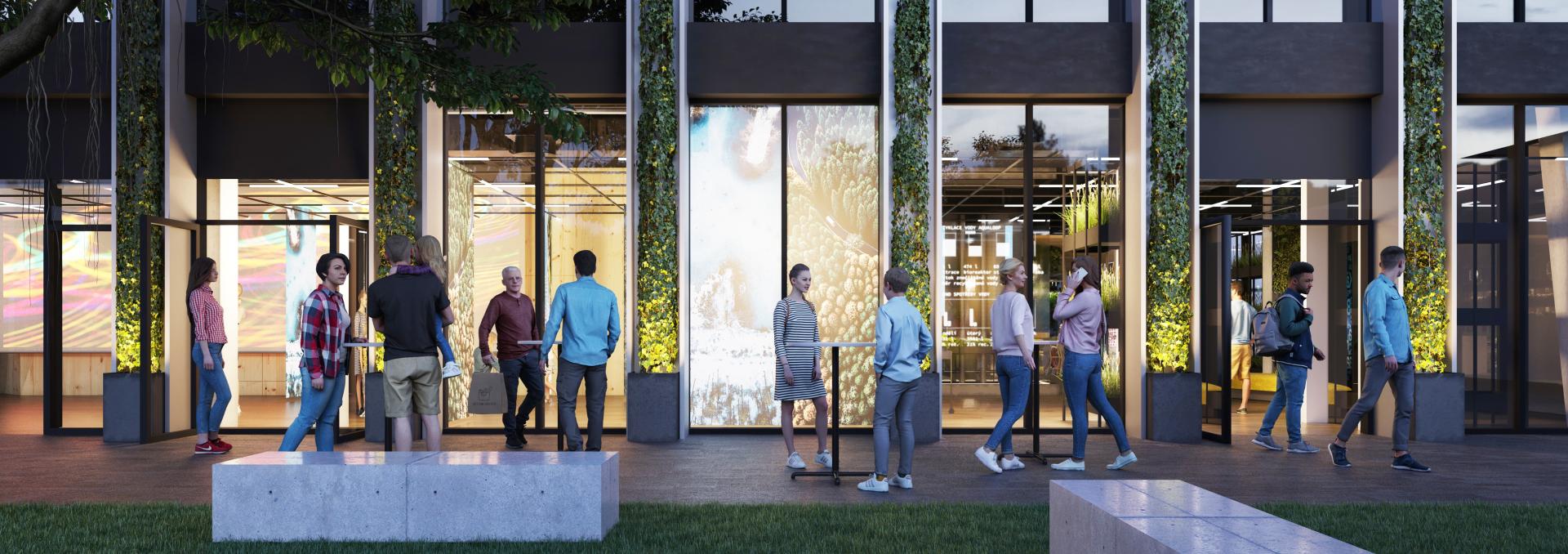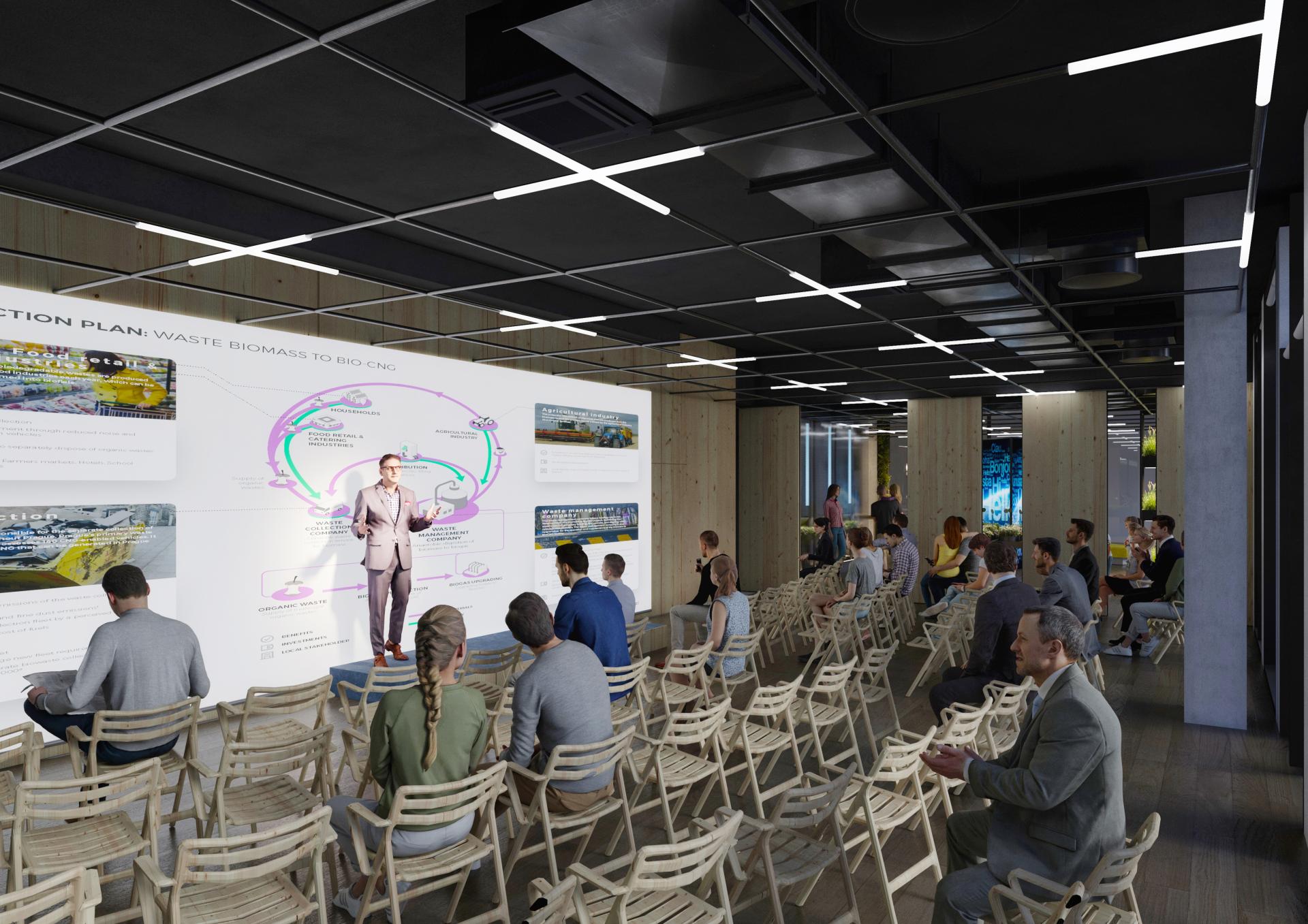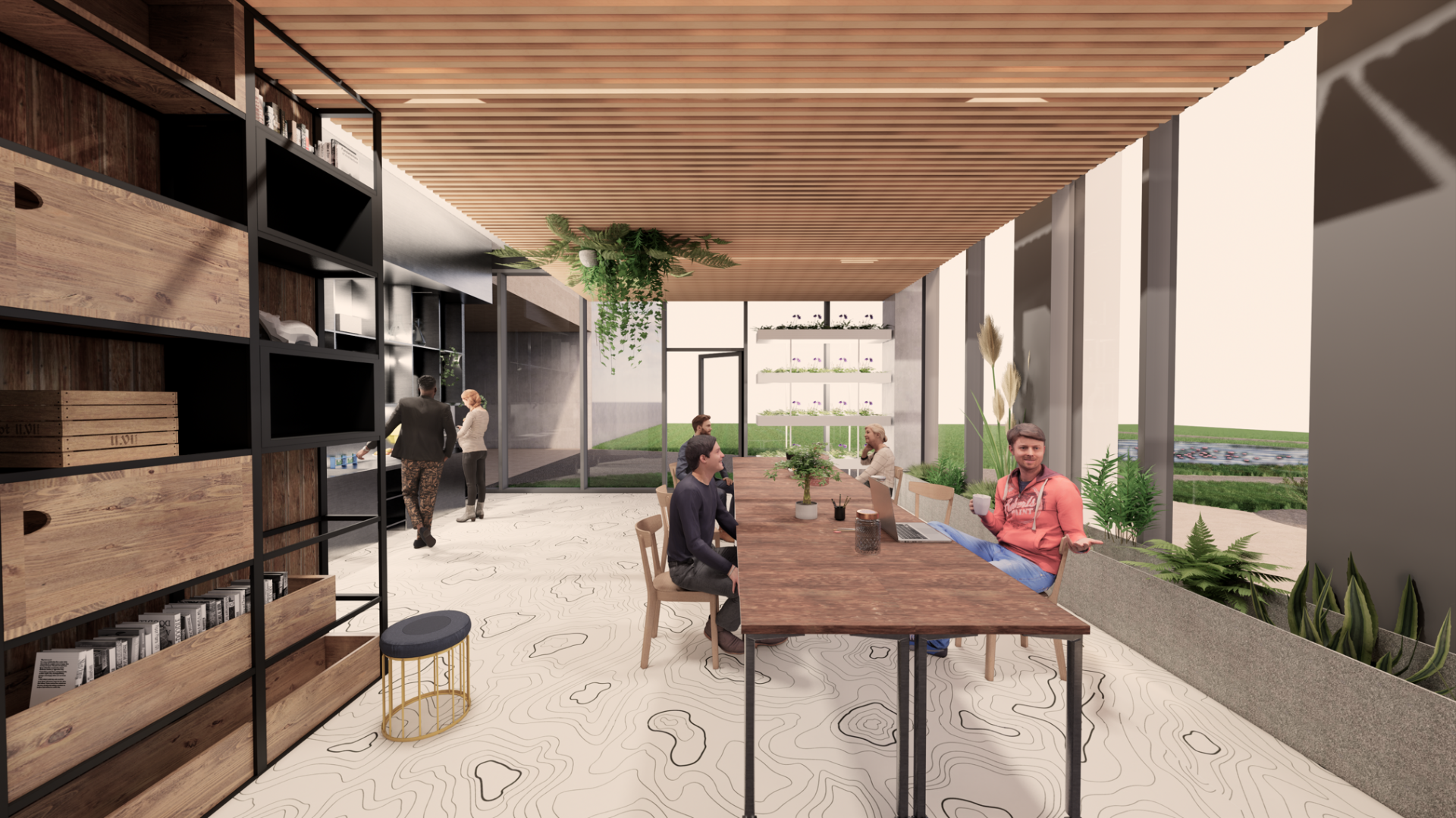Sustainability Experience Centre
Basic information
Project Title
Full project title
Category
Project Description
In late 2021 a unique Sustainability-Ecological-Tranformation-and-Circular-Economy Experience Centre is sheduled to open in the very heart of Prague Business District. Its aim is to connect and invite all stakeholders and public to actively learn about the newest sustainability principles, methods and practices, but perhaps more importantly, invite to share and collaborate by taking active part in transition to sustainable future. The space itself is born out of sustainability principles.
Project Region
EU Programme or fund
Description of the project
Summary
The design is proposing a Flaghip Sustainability Experience Space in Europe.
It was born out of a vision of Ecological Transformation and its co-creation, across all roles, from business stakeholders to local community.
10 principles manifesto of the project:
- Transcends in its impact beyond its site
- Communicates our values and creates unique relationships with stakeholders
- Transforms waste into resources
- Aims for zero carbon footprint
- Promotes diversity (bio, social…)
- Champions innovation and education
- Supports local and global community
- Harbours healthy environment
- Is high-tech and fluid in its use
- Offers multi-sensoric and multi-dimensional experience
The client vision statement:
The center will be a meeting place and dialogue on sustainability and ecological transformation. We want to present our practical solutions in this area, but also offer space for interesting ideas from colleagues from business and the non-profit sector. All with the aim of jointly addressing current environmental and societal challenges.
Key objectives for sustainability
The space is a build up practical manual of principles of circular economy.
The concept is designed to have zero environmental impact throughout its life cycle. Emissions that are by no other means avoidable are to be offseted by the client.
It is fully designed with Desing for Deconstruction principles and those are applied where possible. Most of the materials used are either: circular materials, reused materials from the previous interior fit-out or are recycled materials. The concept therefore shows how sometimes abstract and distant vision of sustainabilty can all come to detail. Also meeting the highest aesthetic demands of a corporate client. The space actively transforms waste into resources throughout its lifecycle: design: material reuse and upcycling, using recycled materials. Also product-as-a-service is being considered, however this sometimes fails as there is not enough offer on the current market in The Czech Republic.
Operation: Zero waste gastronomy, upcycling workshops. Actively promoting change inwards and outwards.
Deconstruction: Design for Disassembly. Each itemm material and detailing is following these principles. Each item also carries a information tag, that describes its story and material in furher detail, allowing everyone to learn and see and be inspired. Also it is a proof of concept.
Key objectives for aesthetics and quality
The project is all about meeting highest aeshetical demands of corporate client whilst using only sustainable principles and materials.
Therefore actively busting a myth that sustainability doesnt look good. On the contrary. The sustainability I believe in, is both high tech in its functionality and good looking, whilst making the planet happier.
This project is designed to meet WELL certificate criteria, as a first of such project in the Czech Republic.
Strong focus is on biophilia in the the interior, creating a "living forest", positively stimulating not only in terms of looks, but also mind.
Key objectives for inclusion
The space is not only a practical manual on “how its done”. It is also a participatory catalyst of change both inwards into clients culture and outwards to broader community, where everyone learn and contibute.
The design process included a deep dialogue with the future users to meet their needs and expectations, ensuring adoption and longer-term sustainability. Outdoor community garden is designed to be catalyst in neigbourhood participation and revive and enliven sometimes overly restrictive environment of office buildings.
Innovative character
I believe part of the innovation lies in a new typology of space - Sustainability-Experince-Showroom. Bringing abstact concepts, such as circular economy and sustainabilty into hands-on-physical experince. Because to really understand we sometimes need to experience first and take learnings from this. And then, we can all take part.

